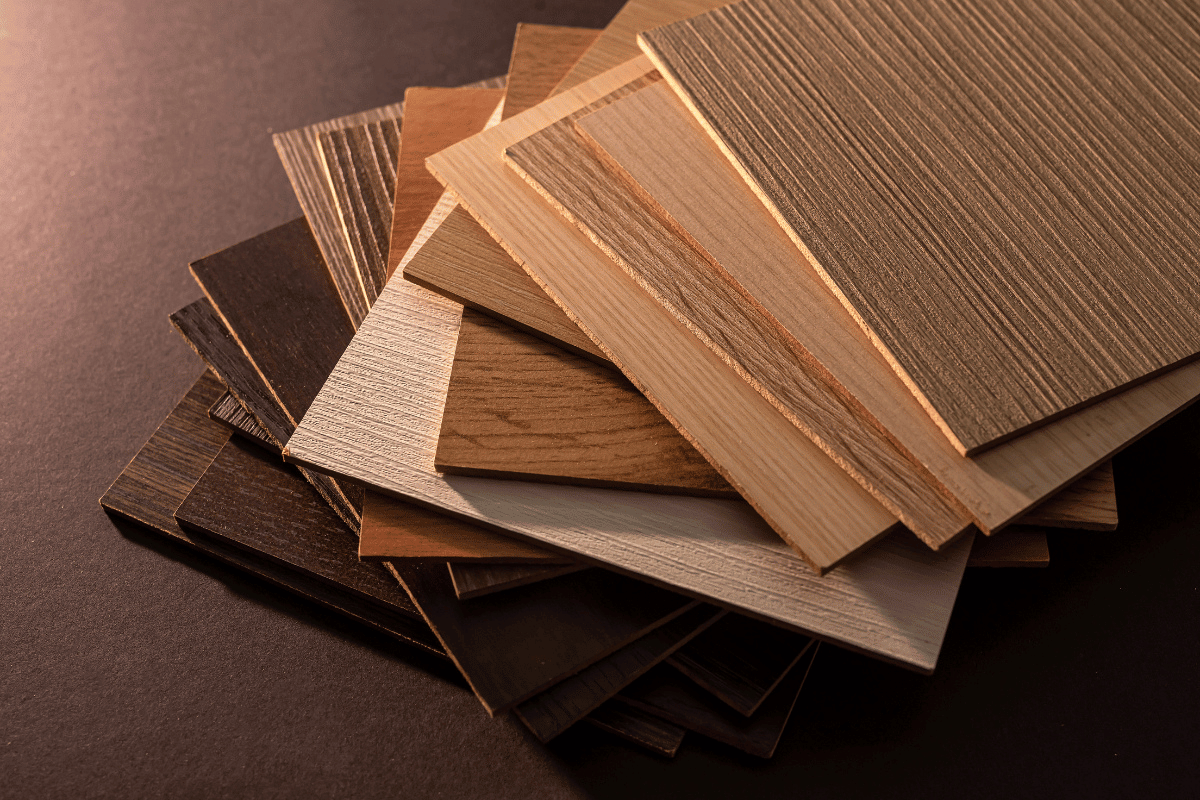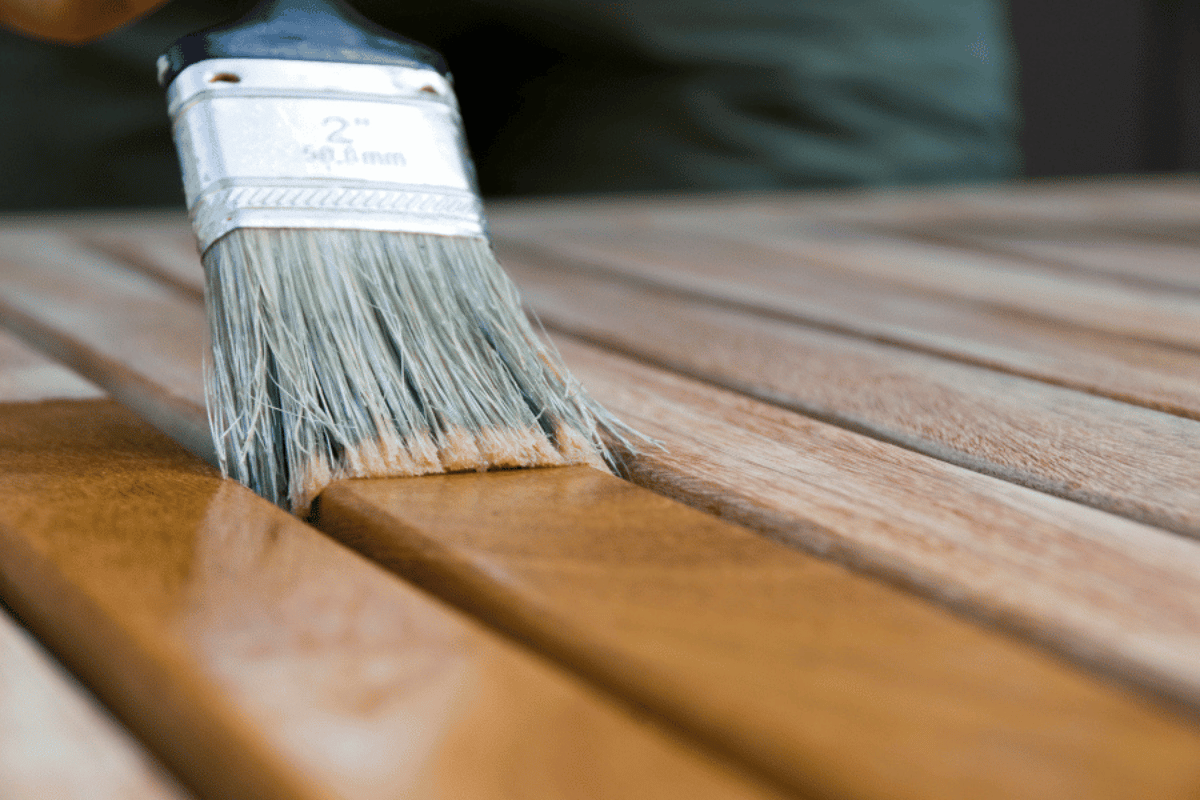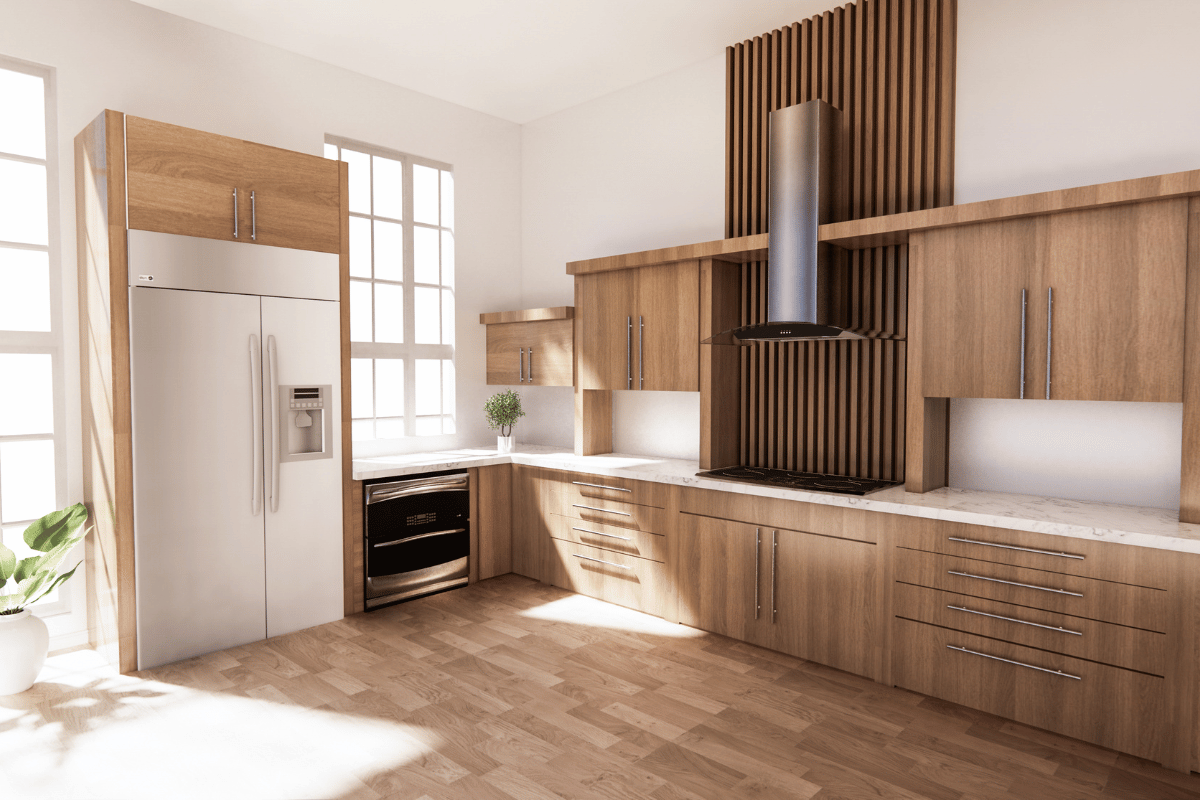What Is The Best Wood for Staining?
Posted by Donovan Thornhill on Apr 16th 2025
Wood stains are a relatively low-cost way to completely change the look and feel of your solid wood cabinet doors. Whether you're looking to make a subtle change in your kitchen or want your cabinets to appear darker, wood stains are the way to go.
However, not all wood types are ideal for staining. The best wood for staining needs open structures that absorb and retain the stain. It should also have a consistent absorption rate to ensure you don't have a blotchy or uneven appearance.
When done correctly, wood-stained cabinets have a high-end look that complements the natural color variation of the wood you choose. Some woods stain easier and more effectively than others, which is something to be aware of if you plan to stain your cabinet doors.
We're here to walk you through the best wood for staining so you can find custom cabinet doors that complement the aesthetic you're trying to achieve.
What Makes a Wood Species Good for Staining?
- Wood types with open pores and a visible grain pattern
- Naturally consistent color or hue
- Wood with low oil and resin content
- Introduce the concept of open-grain vs. closed-grain woods
5 Woods That Are Best for Staining

Wood stain is a translucent coating that you apply to your solid wood cabinet doors to enhance the natural beauty of the wood grain. When shopping for the best wood to stain, you'll want to consider the natural grain pattern, hues, and color vibrancy to find a match that complements your vision.
Here are our five woods that stain well:
1. Oak
Oak is arguably one of the most popular wood choices for cabinet doors. This type of wood ranges between 1200 to 1400 on the Janka hardness ranking, so you can feel confident that your cabinets won't wear and tear as easily and you're getting the most out of your investment. The two most popular types of oak are red and white. While both types of wood are relatively easy to stain, they come with different results.
Red oak is more porous than white oak. So it will absorb the wood stain quicker and deeper. White oak will be more resistant to the stain and may require a few additional coats to get the look you're trying to achieve.
Red oak will also have a more prominent color and wood grain after a stain, while white oak will be more subtle. Both types of oak will look great with a wood stain, but provide two completely different results. This is something to be mindful of when shopping for custom cabinet doors or looking for the cheapest wood that stains well.
Why it stains well:
- Janka hardness ranking between 1200 to 1400
- High porosity
- Open grain structure and a consistent grain pattern
Best stains for different aesthetics:
- Warm brown stain - Farmhouse
- Dark brown stain - Traditional
- Black or grey stain - Modern
Tips:
- Gel-based stains work best
- White oak can be more challenging than red oak
2. Ash
One of the best woods for staining is ash. The gorgeous light color and open-grain pattern help achieve a more distinct look, allowing the true natural beauty of the wood grain to flourish.
Since ash is a natural cream color, it can be strategically stained to resemble different wood types. This is one of the best woods to stain walnut, oak, or any of your favorite darker shades.
Why it stains well:
- Open-pored grain pattern
- Janka hardness ranking 1320
Best stains for different aesthetics:
- Warm brown stain - Traditional
- Black stain - Contemporary
- Light grey stain - Modern
Tips:
- Ash must be properly sanded down before staining
- It will have a lighter base color than other stain-grade wood
3. Cedar
Cedar wood is known for its tight-grained pattern and gorgeous reddish-brown hue. It's the perfect wood type for kitchens with a vintage touch or rustic farmhouse feel. Cedar wood is a popular type of wood for cabinets because of its natural durability and overall aesthetic.
Cedar is also one of the best woods for staining because the wood is porous and absorbs wood stains. Cedar is versatile enough to showcase a dark walnut, brown, or grey stain. Whether you're looking for the best wood for espresso stain or a rich dark grey tone, you can feel confident that cedar wood will help you achieve the look you're going for.
Why it stains well:
- Tight-grained pattern
- Reddish brown hue
- Naturally durable and versatile
- Open grain structure
Best stains for different aesthetics:
- Espresso stain - Rustic
- Dark grey stain - Coastal Chic
- Light brown stain - Southwestern
Tips:
Cedar can sometimes secrete more natural oils than other woods to stain, so ensure it's properly cleansed and prepped before applying a stain.
4. Hickory
Hickory is known for its stunning coarse-textured grain pattern and natural warm shades. This type of wood comes in different shades, including a subtle light cream and a reddish brown with a warmer hue. This wood is unique because the different natural color variations will often live on the same piece of wood, providing a truly distinctive look.
Hickory has an open and porous structure, allowing it to absorb wood stains easily. While it's not the cheapest wood that stains well, it is one of the most durable and is 1820 on the Janka hardness scale.
Why it stains well:
- Coarse-textured grain pattern
- Stunning natural warm hue
- Reddish brown hue
- Open and porous structure
Best stains for different aesthetics:
- Espresso stain - Modern
- Reddish or warm brown stain - Traditional
- Medium or light brown stain - Farmhouse
Tips:
- Hickory typically requires a pre-stained conditioner to get an even finish.
- Works best with gel-based stains.
5. Chestnut
Chestnut is known and loved for its natural, rich, warm hue and brown tones. The elegant grain pattern pairs beautifully with modern kitchen styles and is ideal for individuals who love the natural wood aesthetic.
Chestnut is moderately porous and can fully absorb the wood stain, helping you achieve an even, balanced look. This is one of the best woods for staining because of its versatility and simplicity. Whether you want to keep things light and airy or dark and bold, chestnut can accommodate any shade of stain you desire.
Why it stains well:
- Light base color
- Janka hardness ranking 540
- A consistent grain pattern is less likely to end up blotchy.
- Open grain structure
Best stains for different aesthetics:
- Warm brown stain - Rustic
- Cherry brown stain - Traditional
- Dark brown stain - Vintage
Tips:
- Darker stains help enhance the natural grain pattern.
Woods That Are Difficult to Stain

A smooth, even finish can be challenging with dense wood with a tight or smooth grain pattern. While it's not impossible to get a professional finish with these woods to stain, it can be challenging if you don't have any prior experience.
Here are the least favorite woods to stain for beginners:
- Pine: Pine has an inconsistent grain pattern and tends to be blotchy or uneven when stained.
- Maple: This wood is very dense and does not absorb stains evenly. Applying a pre-stain conditioner to the wood during the prep stage is best to help slow the absorption and provide more control over the finish.
- Cherry: Cherry is notorious for absorbing stains unevenly. The wood species is already darker in color, so staining can make it appear too dark.
Tips for Using Wood Stain
Once you decide which is the best wood stain for your project, it's time to start staining. While the actual staining is a relatively straightforward process, the entire project could take a few hours or even a few days.
Here are a few tips to help you streamline the wood staining process.
Prep Your Cabinet Doors
Before you apply your stain, you'll want to prepare the wood for the treatment. Unfinished cabinet doors may require additional sanding to remove imperfections and unwanted roughness from the wood.
Do a Test Patch
Consider doing a test patch on a small portion of the cabinet door. This will ensure you like the color before you start staining the entire cabinet door.
Use a Brush to Apply The Stain
Using a brush to apply the stain is crucial to getting the desired color. Apply even coats to avoid oversaturating pieces of wood. If you accidentally get too much stain on the wood, you can use a dry washcloth to wipe it off. The best brush for staining wood is a bristle brush or a brush made with polyester material.
Apply Multiple Coats
You may need to apply a few coats to get the desired look you're trying to achieve. Every wood type is different, and the darker the stain you want to achieve, the more coats you'll need to apply. For example, the best wood for staining gray may require 2-3 additional coats of stain to get the look you're going for.
Wood Cabinet Doors and Drawers for Staining

CabinetDoors.com offers a wide selection of cabinet door styles and drawer fronts, available in various wood species. You can order your cabinet doors and drawer fronts unfinished directly from us, so you can easily stain them on your own in your home.
Before placing your order, it's best to weigh the pros and cons of the different wood types we have available. Whether you're looking for the best wood for staining dark, walnut, or grey, we have what you need to get the complete look for your home.
SHOP CABINET DOORS AND DRAWERS FOR STAINING
Frequently Asked Questions
Where should I do a test patch on my cabinet doors?
You want to test your stain in the least visible area. Typically, the back corner of a cabinet or the inside of a drawer front are the best locations and won't impact the overall appearance.
How many coats of stain should I apply to my cabinet doors?
Most stains must be applied at least twice to achieve a professional finish. Applying too many coats can lead to a splotchy finish. Instead, apply two thin and even coats of stain.
Do I need to seal stained wood?
Yes, stained wood needs to be sealed. A sealant will help maintain the stain and prevent unwanted dents, scratches, or imperfections.
What is the hardest wood to stain?
Woods with tight grain patterns are the most challenging to stain. This includes species like maple, pine, and birch. If you plan to stain one of these woods, it's best to use a gel-based stain and ensure your wood is properly prepped before starting.
What is the easiest wood to stain?
Woods with an open-grain pattern are generally easier to stain. If you're new to staining, stick to woods like hickory, oak, or ash.



